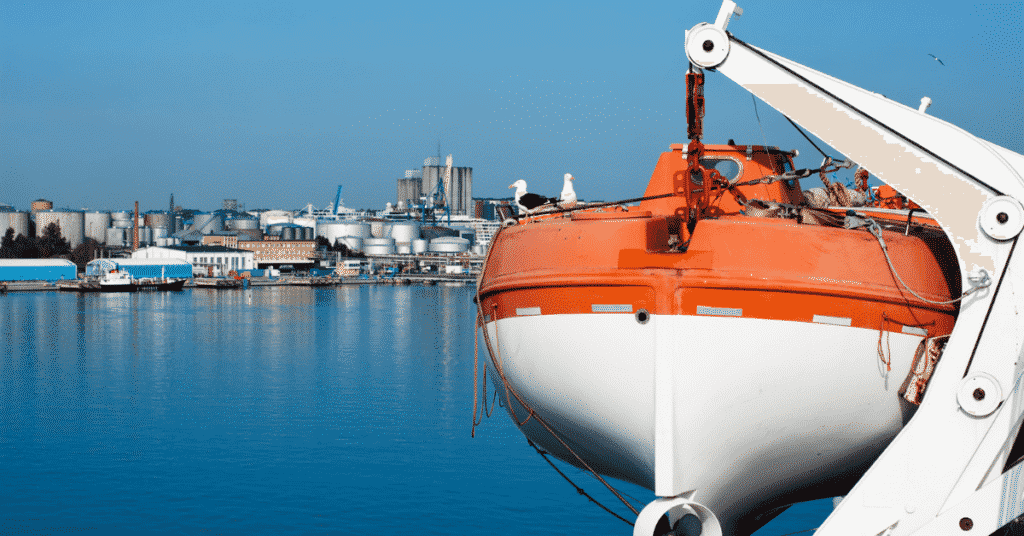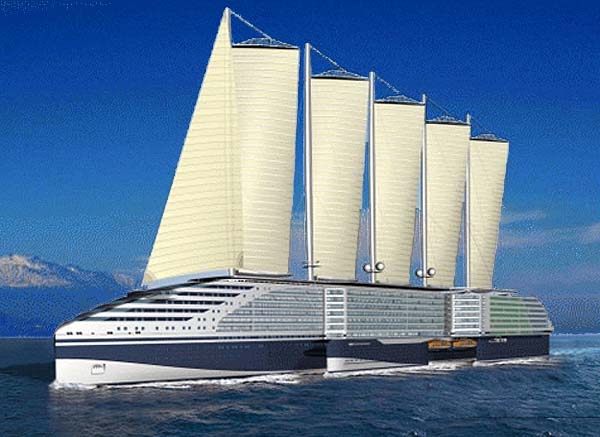Watch: Why Don’t Ships Sink?
Have you ever seen any giant cruise ship or cargo ship stacked with containers weighing millions of tons?
One might wonder how they can keep afloat, even in rough weather.
Though made of steel, why don’t they sink like a piece of iron or rock would?
The answer lies in the Archimedes principle or the concept of buoyancy devised by Greek scientist Archimedes.
The Archimedes principle states that a body immersed in fluid faces an upward resistance called buoyancy or buoyant force. The buoyant force exerted on a submerged object equals the weight of the fluid displaced by it.
Gravity is exerted downwards by the object, determined by the object’s mass, while buoyancy is directed upwards. In simple words, if the gravitational force on the object is less than the buoyant force, the object will float.
When we throw a stone into the water, the buoyant force of the stone is less than its gravity. Now how can we be sure that there is a buoyancy force?
If you throw the same stone from a height on the ground, the stone will land on the ground at a very high speed due to the pull of gravity.
But, if we put the same stone in a tank full of water filled to the same height, the stone will take more time to come to the bottom of the tank.
This resistance experienced by the stone is the buoyancy force.
How can this principle be applied to ships?
Ships are enormous steel vessels weighing hundreds of thousands of tonnes.
Well, think again! What helps keep ships afloat is their shape and what’s inside.
Ships are not solid pieces of steel. Instead, they are hollowed-out shells of steel.
A ship has many components, but most importantly, air. This is called RESERVE BUOYANCY.
The air inside a ship is much less dense than water. That’s what keeps it floating!
The average density of the ship’s total volume and everything inside (including the air) must be less than the same volume of water.
As a ship is set in water, it pushes down and displaces an amount of water equal to its weight. The closer the total density of the ship is to the density of the same volume of water, the greater the amount of the ship will be in the water.
If the average density of the ship is greater than the density of water, then the ship will sink.
When a ship sinks, it is because water enters the ship. This forces out the air, making the average density of the ship greater than that of the water.
One of the most famous disasters was the sinking of the RMS Titanic. The ship struck an iceberg off the south coast of Newfoundland in April of 1912.
The iceberg tore open several small holes in its hull, letting water into the bow. As more water entered the ship, the air was forced out. This caused the ship to sink to the bottom of the Atlantic.
Like every other ship that ever sank, the Titanic hit bottom due to a lack of buoyancy!
This is why ships sink!
Disclaimer: The authors’ views expressed in this article do not necessarily reflect the views of Marine Insight. Data and charts, if used, in the article have been sourced from available information and have not been authenticated by any statutory authority. The author and Marine Insight do not claim it to be accurate nor accept any responsibility for the same. The views constitute only the opinions and do not constitute any guidelines or recommendations on any course of action to be followed by the reader.
The article or images cannot be reproduced, copied, shared, or used in any form without the permission of the author and Marine Insight.
Do you have info to share with us ? Suggest a correction
Related Articles
About Author
Marine Insight News Network is a premier source for up-to-date, comprehensive, and insightful coverage of the maritime industry. Dedicated to offering the latest news, trends, and analyses in shipping, marine technology, regulations, and global maritime affairs, Marine Insight News Network prides itself on delivering accurate, engaging, and relevant information.

About Author
Marine Insight News Network is a premier source for up-to-date, comprehensive, and insightful coverage of the maritime industry. Dedicated to offering the latest news, trends, and analyses in shipping, marine technology, regulations, and global maritime affairs, Marine Insight News Network prides itself on delivering accurate, engaging, and relevant information.
Daily Maritime News, Straight To Your Inbox
Sign Up To Get Daily Newsletters
Join over 60k+ people who read our daily newsletters
By subscribing, you agree to our Privacy Policy and may receive occasional deal communications; you can unsubscribe anytime.



